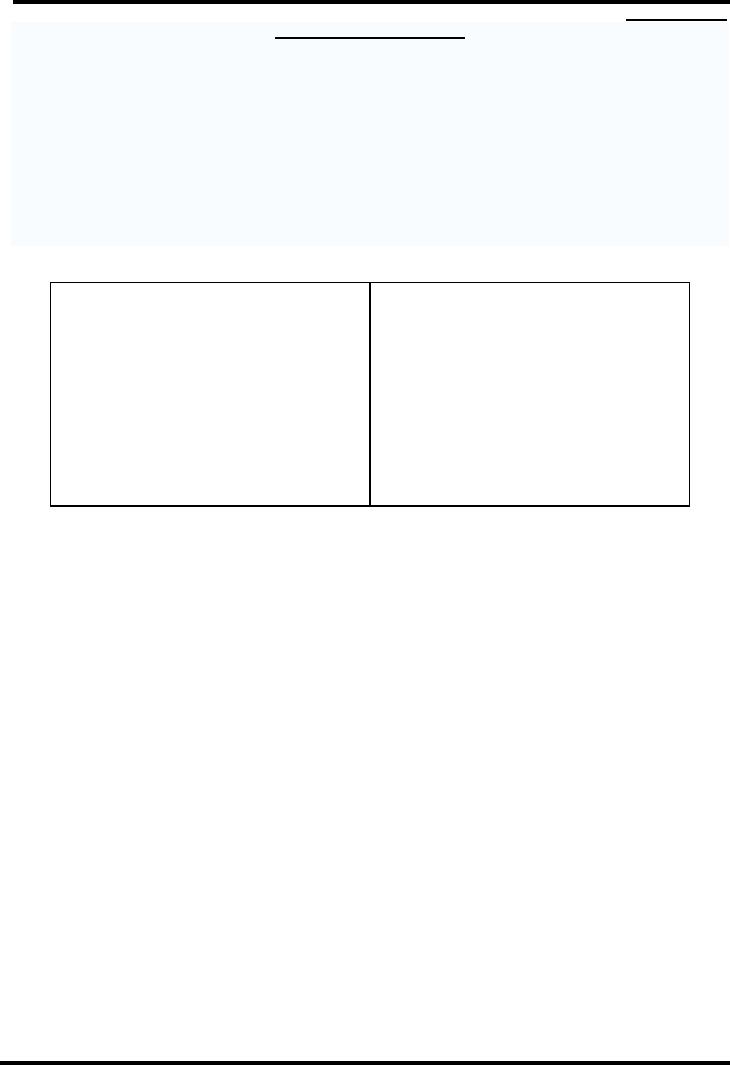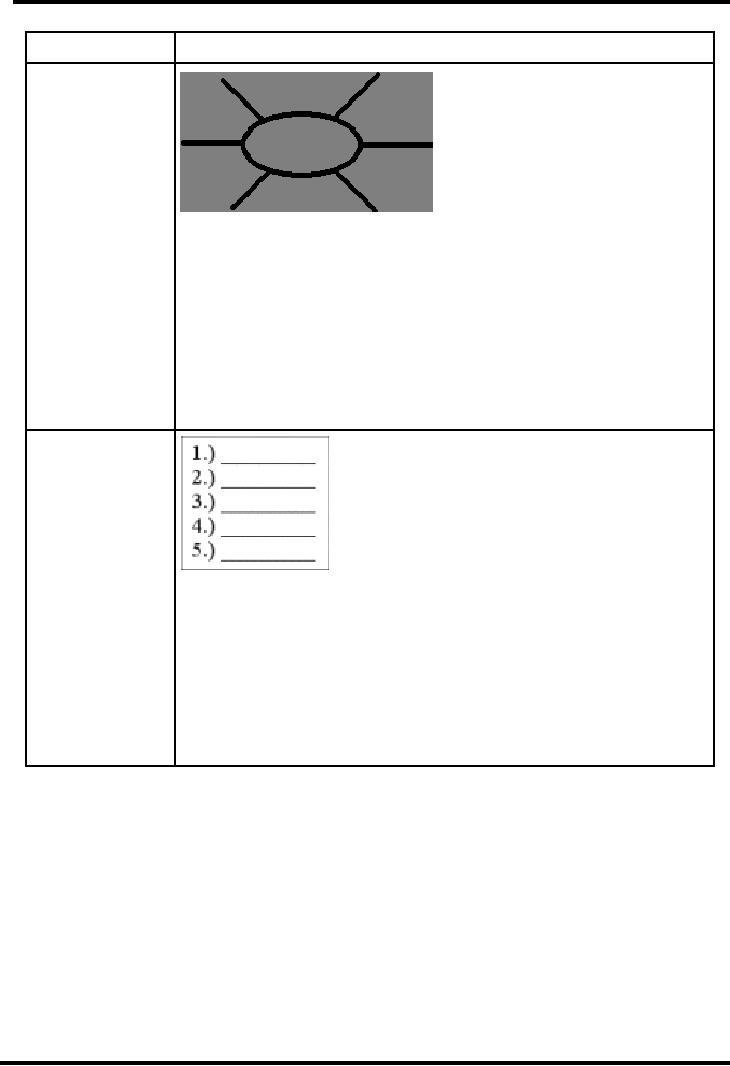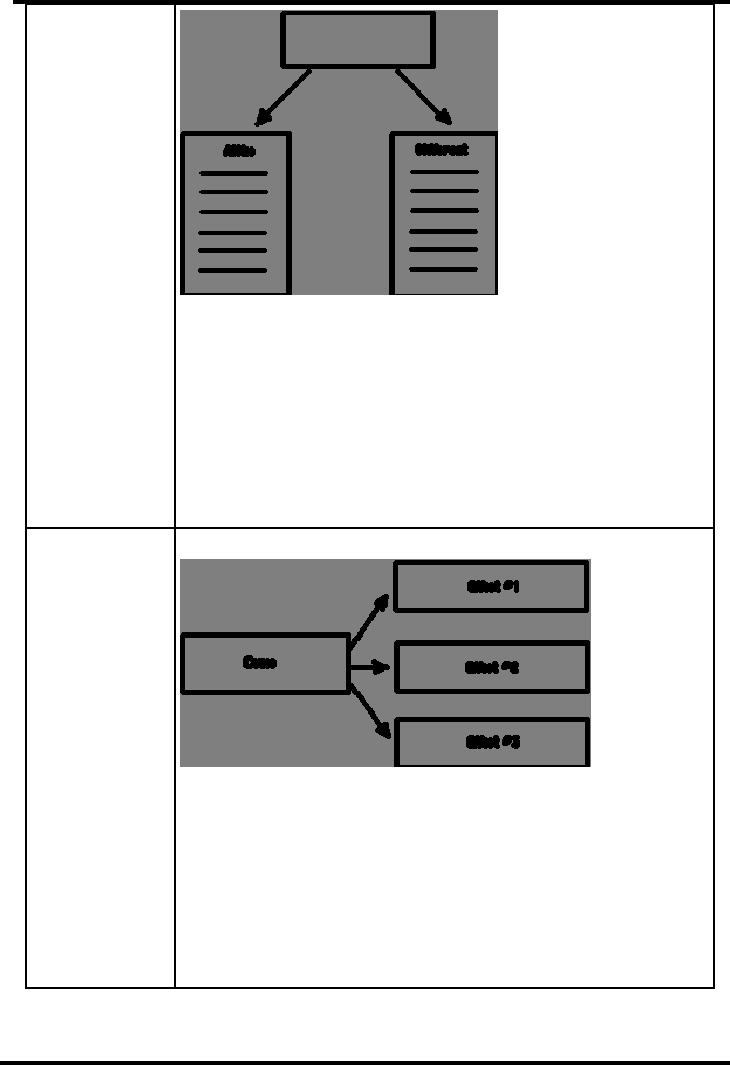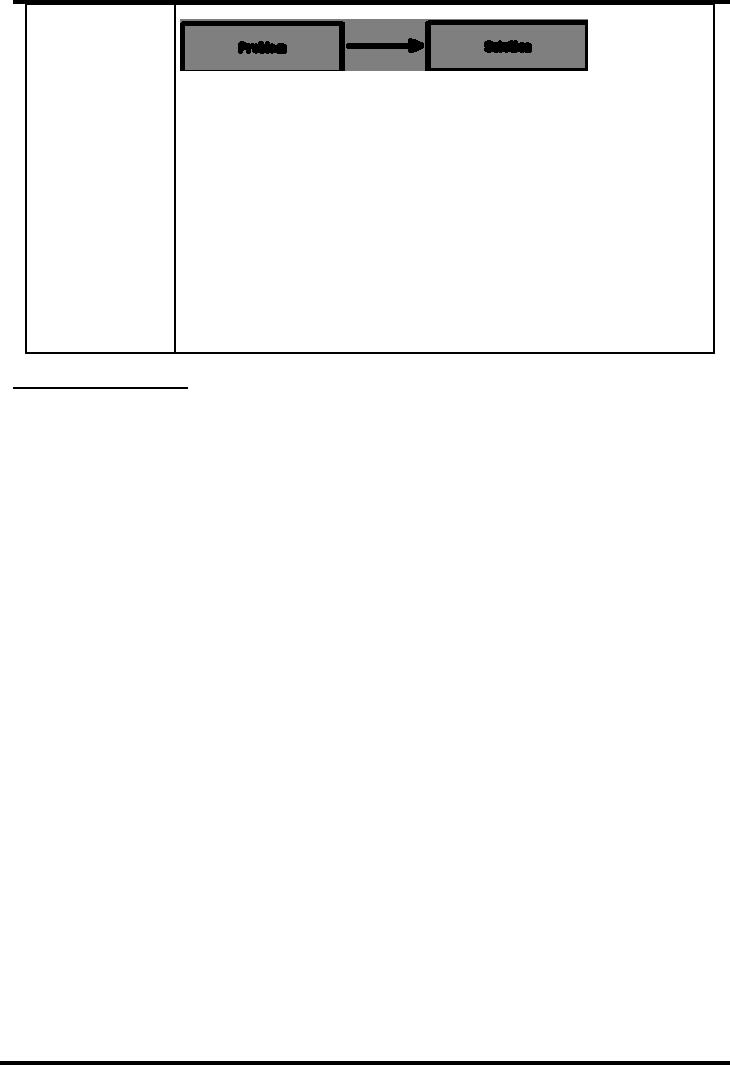 |
EXPOSITORY WRITING:LOGICAL FALLACIES, APPEAL TO EMOTION |
| << SIGNAL WORDS:Non word Emphasis Signals |
| THE WRITING STYLES: REPORT and NARRATIVE WRITING, SHORT REPORTS >> |

Journalistic
Writing MCM310
VU
LECTURE
24
EXPOSITORY
WRITING
Expository
writing is a
mode of writing in which the
purpose of the author is to inform,
explain,
describe,
or define his or her subject
to the reader. Expository text is
meant to `expose' information
and is the
most
frequently used type of writing by
students in colleges and
universities. A well-written exposition
remains
focused
on its topic and provides
facts in order to inform its
reader. It should be unbiased, accurate,
and use a
scholarly
third person tone. The text
needs to encompass all
aspects of the subject. Examples of
expository
writing
can be found in magazine and
newspaper articles, non-fiction books,
travel brochures, business
reports,
memorandums,
professional journal and
encyclopedia articles and
many other types of
informative writing.
One
of the most familiar and
basic forms of expository writing is the
five-paragraph essay, which features
an
introduction
with a clear thesis
statement, three main body
paragraphs and a
conclusion.
Some
example topics for expository
writing:
9.
Global warming
1.
Alcohol
10.
Homosexuality
2.
Animal experimentation
11.
Immigration
3.
Capital punishment
12.
Internet Privacy
4.
Censorship
13.
Old homes
5.
Endangered species
14.
Nuclear weapons
6.
Gambling
15.
Students gangs
7.
Biological weapons
16.
Medical ethics
8.
Genetic Engineering
Expository
writing is difficult
because
1.
Some of your arguments may
be irrelevant or unreasonable.
2.
The reader may disagree
with you strongly.
3.
These topics are more
difficult than writing, for
example, about a person or
place you know well.
Expository
Writing: Guidelines
1.
Keep your temper.
2.
Don't attack people of a different
race or religion.
3.
Consider both sides of a
topic.
4.
Don't exaggerate.
5.
Provide proof or examples if
you make a claim or a
statement.
6.
Avoid dogmatic words like
always, never, only,
etc.
Expository
writing: Organization
1.
Opening
2.
Discuss the both
sides
3.
Give your opinion
4.
Conclusion
83

Journalistic
Writing MCM310
VU
Pattern
Name
Written
and Graphic Example of the
Pattern
Description
The
author describes
a
topic by listing
characteristics,
features,
and
examples.
It
provides
details
about
how
something
looks,
feels,
tastes, smells, Example
of Descriptive Writing
makes
one feel, or
Expository
essays are written by students to
demonstrate their knowledge
and understanding of a
sounds
particular
topic. For example, a
student might use a descriptive
pattern to emphasize the
features
Words
and
characteristics of a topic. Sequential
writing emphasizes the order of events,
listing items in
Cue
example,
numerical
or chronological order. A writer
might use a comparison or contrast
pattern to
for
the
characteristics emphasize
the similarities or differences between
two topics. A cause and/or effect
pattern shows
the
relationship between events, while a
problem/solution pattern shows a
different kind of
are...
relationship
that discusses a problem and suggests
solutions. Variations of these patterns
are
sometimes
used, as well as a combination of
patterns to create an expository
essay.
Sequence
or
Process
The
author lists
items
or events in
numerical
or
chronological
order.
Cue
Words
first,
second, third; Example
of Sequential Writing
next;
then; finally
Expository
writing is intended to convey the
writer's knowledge about a
topic. While
different
patterns
may be employed to create the essay, every essay contains
the same features:
the
introduction,
the thesis, the body
paragraphs, and the conclusion.
The introduction is the
first
paragraph
in the essay. The introduction contains
the thesis statement, one sentence
that
summarizes
the main idea of the essay.
The body paragraphs follow the
introduction and
explain
the
main topics. Lastly, the
conclusion is the final
paragraph that restates the
main topics and
the
thesis. Every expository essay
contains these features, in this
order.
84

Journalistic
Writing MCM310
VU
Comparison
The
author explains
how
two or more
things
are
alike
and/or
how they are
different.
A
comparison
essay
usually
discusses the
similarities
between
two
things, while the
contrast
essay
discusses
the
differences.
Cue
Words
different;
in contrast; Example
of Compare/Contrast Writing
alike;
same as; on the
other
hand
Expository
writing has distinct features
that distinguish it from
creative writing. The
content of
an
expository essay is factual and
straight-forward while the content of a
creative story is
imaginative
and symbolic. Expository essays are
written for a general
audience but
creative
stories
are designed for a specific audience.
The writing style of an
expository essay is formal,
standard
and academic, while a
creative story uses an informal
and artistic style.
The
organization
of an expository essay is systematic and
deliberate; on the other hand,
the
organization
of a creative story is more arbitrary
and artistic. Finally, the most
important
difference
between the two types of writing is the
purpose of the text. An
expository essay is
written
to inform and instruct,
while a creative story is
written to entertain and
captivate.
Cause
/ Effect
The
author focuses
on
the relationship
between
two or more
events
or
experiences.
The
essay
could discuss
both
causes
and
effects,
or it
could
simply
address one
or
the other. A
cause
essay usually
discusses
the reasons
why
something
Example
of Cause/Effect Writing
happened.
An effect
essay
discusses
what
There
are several reasons why so many people
attend the Olympic games or watch them
on
happens
after a
television.
One reason is tradition. The name
Olympics and the torch
and flame remind people
of
specific
event or
the
ancient games. People can escape the
ordinariness of daily life by
attending or watching
the
circumstance.
Olympics.
They like to identify with
someone else's individual sacrifice and
accomplishment.
Words
National
pride is another reason, and
an athlete's or a team's hard
earned victory becomes a
Cue
why;
nation's
victory. There are national
medal counts and people keep
track of how many medals
reasons
if...then;
as a result; their
country's athletes have
won.
therefore;
because
85

Journalistic
Writing MCM310
VU
Problem
/ Solution
The
author states a
problem
and lists
one
or
more
solutions
for the
problem.
A variation
of
this pattern is the
Example
of Problem/Solution Writing
question-
and-answer
format
in which the
One
problem with the modern
Olympics is that it has become very big
and expensive to
operate.
author
poses
a
The
city or country that hosts
the games often loses a lot of money. A
stadium, pools, and
playing
question
and then
fields
must be built for the
athletic events and housing is needed
for the athletes who come
from
answers
it.
around
the world. And all of these
facilities are used for only 2
weeks! In 1984, Los
Angeles
solved
these problems by charging a fee for
companies who wanted to be official
sponsors of the
Cue
Words
games.
Companies like McDonald's
paid a lot of money to be part of the
Olympics. Many
the
problem is; the
buildings
that were already built in the
Los Angeles area were also
used. The Coliseum where
the
dilemma
is; puzzle is
1932
games were held was used again and many
colleges and universities in the
area became
solved;
question...
playing
and living sites.
answer
LOGICAL
FALLACIES:
Strong,
logical arguments are essential in
writing. However, the use of
faulty logic or reasoning to
reach
conclusions
discredits arguments and
shows lack of support and
reasoning. This handout
lists some of these
logical
errors--called logical
fallacies--that
are most commonly encountered in
everyday communication.
APPEAL
TO AUTHORITY: Accepting
someone's argument because of
his or her authority in a
field
unrelated
to the argument, rather than evaluating the
person's argument on its own
merits. (Also called
Argumentum
ad Verecundiam or
"argument from modesty")
EXAMPLE:
My dentist says she's voting
for the conservative candidate, so I
will too.
APPEAL
TO EMOTION: Exploiting
the audience's feelings to convert them
to a particular viewpoint.
Appeals
to fear, flattery, ridicule, pity, or
spite are among the most
common forms this fallacy takes. In
some
circumstances,
appealing to emotion may be appropriate,
but writers should avoid appeals to
emotion when
reason
and logic are expected or
needed.
EXAMPLE:
I'm sure someone with
your vast experience can see
that plan B is better. (Appeal to
flattery)
APPEAL
TO IGNORANCE: Basing
a conclusion solely on the absence of
knowledge. (Also called
Argumentum
ad Ignoratiam)
EXAMPLE:
I've never seen an alien, so
they must not exist.
APPEAL
TO POPULAR OPINION: Claiming
that a position is true because
most people believe it is.
(Also
called Argumentum
ad Populum)
EXAMPLE:
Everyone cheats on their income
taxes, so it must be all
right.
ATTACKING
THE PERSON: Discrediting
an argument by attacking the person
who makes it, rather
than
the
argument itself (Also called
Poisoning the Well or Argumentum
ad Hominem--literally,
"argument against the
man")
EXAMPLE:
Don't listen to Becky's opinion on
welfare; she just opposes it
because she's from a rich
family.
BEGGING
THE QUESTION: Using a
premise to prove a conclusion when the
premise itself assumes
the
86

Journalistic
Writing MCM310
VU
conclusion
is true (Also called Circular Argument,
Circulus
in Probando, and
Petitio
Principii)
EXAMPLE:
I know I can trust Janine
because she says that I
can.
COMPLEX
QUESTION: Combining
two questions or issues as if they
were one, when really they should
be
answered
or discussed separately. Often
involves one question that
assumes the answer to
another.
EXAMPLE:
Why did you steal the CD?
(Assumes you did steal the
CD.)
COMPOSITION:
Assuming
that because parts have
certain properties, the whole does as
well. (The reverse
of
Division)
EXAMPLE:
All the parts of the engine
were lightweight, so the engine should
have been
lightweight.
CORRELATION
IMPLIES CAUSATION: Concluding
that because two things
occur at the same time,
one
has caused the other. (Also
called Cum
Hoc Ergo Propter
Hoc--literally
"with this, therefore because
of
this.")
EXAMPLE:
There was a full moon the
night I had my car accident,
so I'm never driving again
under a full
moon.
DIVISION:
Assuming
that because a large body
has certain properties, its
parts do as well. (The reverse of
Composition)
EXAMPLE:
Europe has great museums, so
every country in Europe must
have great museums.
EQUIVOCATION:
Applying
the same term but using
differing meanings.
EXAMPLE:
The sign by the pond said,
"Fine for swimming," so I dove
right in.
FALSE
CAUSE AND EFFECT: Claiming
that because one event
occurred before a second, it caused
the
second.
(Also called Coincidental Correlation
and Post-Hoc
Ergo Propter Hoc--literally
"after this, therefore
because
of this.")
EXAMPLE:
Yesterday I ate broccoli and
then failed my test. I'm
never eating broccoli before a
test again.
FALSE
DILEMMA: Suggesting
only two solutions to a problem when
other options are also
available. (Also
called
Bifurcation)
EXAMPLE:
America--loves it or leaves it!
HASTY
GENERALIZATIONS: When a
writer arrives at a conclusion
based on inadequate evidence or
a
sample
that is too small.
EXAMPLE:
I liked the last Chinese
restaurant I went to, so I will
like every Chinese
restaurant in the world.
IGNORING
THE ISSUE: Shifting
the reader's attention from the
real issue to a different
argument that
might
be valid, but is unrelated to the
first (Also called Arguing
beside the Point and
Ignoratio
Elenchi.)
EXAMPLE:
No, the criminal won't say
where he was on the night of the
crime, but he does remember
being
abused
repeatedly as an innocent
child.
RED
HERRING: Introducing
an unrelated or invalid point to distract
the reader from the actual
argument.
Appeal
to Emotion, Attacking the Person,
Ignoring the Issue, and
Straw Man are a few examples
of Red
Herring
fallacies.
87

Journalistic
Writing MCM310
VU
SLIPPERY
SLOPE: Assuming
a chain of cause-effect relationships
with very suspect
connections.
EXAMPLE:
If I give you a free ticket, then
I'll have to give everyone a
free ticket. Then my boss
will get mad
and
fire me, and I will
become homeless. So giving
you a free ticket will
make me homeless.
STACKING
THE DECK: When a
writer tries to prove a
point by focusing on only
one side of the
argument
while
ignoring the other
EXAMPLE:
Obviously the United States
and China should have a free
trade agreement, since it
would reduce
prices,
increase efficiency, and pave the
way to greater cultural
exchange.
STRAW
MAN: Attacking
one of the opposition's unimportant or
small arguments, while
ignoring the
opposition's
best argument.
EXAMPLE
People from Quebec want to
secede from Canada to get
their own currency. Don't
they realize
money
isn't everything?
Source:
Utah
Valley State College Writing
Center
88
Table of Contents:
- INTRODUCTION TO JOURNALISTIC WRITING:Practical, THINGS TO KNOW
- QUALITIES OF GOOD WRITERS
- QUALITIES OF GOOD WRITERS
- QUALITIES OF GOOD WRITING:Achieve appropriate readability:
- QUALITIES OF GOOD WRITING:Be concise, Be creative, Be correct
- THE PROCESS OF WRITING:INVENTION, WHEN YOU START TO WRITE
- THE PROCESS OF WRITING II:ORGANIZING, DRAFTING, REVISING
- ALL ABOUT WORDS:HOW WORDS ARE FORMED?:SUFFIXES
- DICTIONARY-A WRITER’S LANGUAGE TOOL:KINDS OF INFORMATION
- PARTS OF SPEECH:Noun Gender, Noun Plurals, Countable Nouns
- BASIC CLAUSE PATTERNS
- ACTIVE AND PASSSIVE VOICE
- MODIFIERS AND SENTENCE TYPES:COMPOUND SENTENCES
- REPORTED SPEECH:Indirect Questions, Direct commands
- GRAMMATICAL SENTENCE – ISSUES:SUBJECT-VERB AGREEMENT
- GRAMMATICAL SENTENCE – ISSUES II:SENTENCE FRAGMENTS
- EFFECTIVE SENTENCE:PARALLELISM, NEEDED WORDS, SHIFTS
- STYLE: GUIDELINE AND PITFALLS I:COLLOQUIAL VS FORMAL, CIRCUMLOCUTION
- STYLE: GUIDELINE AND PITFALLS II:AMBIGUITY, REDUNDANCY, EUPHEMISM:
- PARAGRAPH WRITING: TYPES AND TECHNIQUES:STRUCTURE
- PARAGRAPH WRITING: TYPES AND TECHNIQUES:Putting on Our Play
- ESSAY WRITING:VARIOUS STRATEGIES FOR ESSAYS, PROMPTS
- SIGNAL WORDS:Non word Emphasis Signals
- EXPOSITORY WRITING:LOGICAL FALLACIES, APPEAL TO EMOTION
- THE WRITING STYLES: REPORT and NARRATIVE WRITING, SHORT REPORTS
- THE WRITING STYLES: DESCRIPTIVE AND PERSUASIVE WRITINGS, Observation
- RESEARCH WRITING AND DOCUMNETING SOURCES:Handling Long Quotations
- Summary and Précis Writing:CHARACTERISTICS OF GOOD SUMMARY
- Punctuation:THE PERIOD, THE COMMA, THE SEMICOLON, THE COLON
- MECHANICS:ABBREVIATIONS, NUMBERS, SPELLING, THE HYPHEN
- READING SKILLS FOR WRITERS:EDUCATED READING, STEPS
- PARTS OF A NEWSPAPER:Box-out, By-line, Caption, Exclusive, Feature
- THE LANGUAGE OF THE NEWSPAPERS II:BROADSHEET NEWSPAPER
- News Writing and Style I:WHAT TO LOOK FOR IN A NEWSPAPER
- NEWS WRITING II:Accuracy, Clarity, Style, Qualities of Effective Leads
- EDITORIAL WRITING:WRITING AN EDITORIAL:STRUCTURING AN EDITORIAL
- WRITING FEATURES:GENERATING FEATURE STORY IDEAS
- WRITING COLUMNS:Column and a news report, Purpose, Audience
- WRITING ARTICLES FOR NEWSPAPERS:The Heading, The Lead
- WRITING ANALYSIS:purpose, scope, method, results, recommendations
- LETTERS TO EDITORS:Four important aspects about letters, Organizing letters
- BROADCAST AND WEB NEWS WRITING:WRITE CONCISELY, BROADCAST STYLE
- WRITING PRESS RELEASE, REVIEWS AND OBITUARIES:Summary of Content:
- THE ART OF INTERVIEWINGS
- FINAL THOUGHTS:Practical, Job-Related, Social, Stimulating, Therapeutic